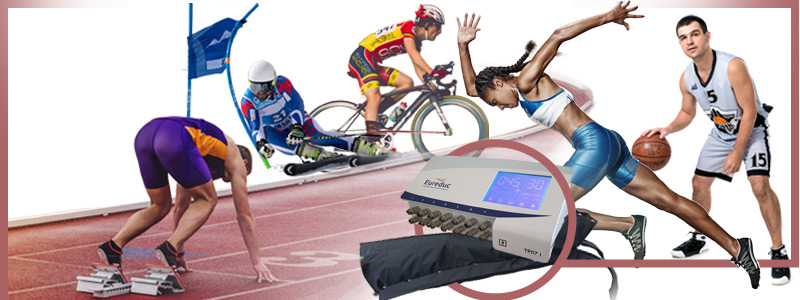Which protocols and equipment for sport recovery?
By Jean-Jacques Gauthier
Masseur-Physiotherapist (full national certificate)
and Consultant-Trainer for Amphorm Consulting
As necessary as the warm-up, the recovery phase after an intense physical effort allows the athlete to regain his/her full physical potential and to regenerate, in order to train effectively, to progress towards an objective and to perform without injury.
Recovery has 2 main objectives: to eliminate the toxic substances accumulated in the body as a result of the effort and to reconstitute its energy reserves. It is based on 3 main pillars:
REHYDRATION AND NUTRITION
During any training or competition, athletes sweat in order to regulate their temperature and evacuate the toxins that acidify their body. It is therefore essential that they hydrate before, during and after the effort, in particular to compensate the loss of mineral salts and trace elements.
It is also essential to compensate for energy losses and to do this, by consuming:
- a food rich in carbohydrates, glucose and fructose to help replenish muscle and liver glycogen reserves
- a food with alkalizing properties to neutralize the acidity of the body
- some proteins – in long-duration events – to repair muscle fibers and preserve the immune system.
SLEEP
Sport and sleep are pairing. Indeed, deep sleep phases enable muscles complete relaxation, body recovery and muscular tissues regeneration. This recovery process, linked to the secretion of specific hormones, takes place more easily at the beginning of the night, during the first hours of sleep. This is why athletes must respect their sleep cycle and respect 7-to-8-hour nights.
STRETCHING AND THERAPEUTIC TECHNIQUES
Stretching
Stretching has become the subject of much controversy. It is possible to stretch after a muscular effort, taking care not to trigger pain. Stretching should be done gently and in coordination with breathing, i.e., stretching muscles on the exhaled time.
Cryotherapy
This recovery technique has considerably evolved. Immersion in a tub of water with ice has been replaced by the use of whole-body cryotherapy chambers. However, the principle remains the same: to obtain a rapid lowering of the body temperature, which generate a circulatory boost (vasoconstriction), an anti-inflammatory and analgesic effect, as well as an accelerated reconstitution of the injured muscle cells.
However, it is not available to everyone because it requires significant resources in terms of facilities and handling and has certain contraindications (hypertension +++).
Massages
Massages, lasting an average of 30 to 60 minutes, have a vascularizing, draining, anti-inflammatory, analgesic and anti-edematous effect. They can be manual and/or instrumental.
Vacuotherapy is an instrumental depresso-massage technology. Performed by a practitioner using suction cups of various shapes and sizes, it improves both microcirculation and micro-oxygenation and helps the elimination of toxins in muscle cells.
Pressotherapy, an instrumental “hands-free” massage technology, remains the essential recovery equipment. The athlete puts on massage boots and the practitioner selects the most appropriate program for his/her condition, in terms of pressure level and duration. The boots perform a compression and decompression massage, which drains edema, improves venous and lymphatic return (with an anti-fatigue effect) and improves toxin elimination. The session also has beneficial effects on stress and overall relaxation.
There are many pressotherapy devices on the market and they are all far from having the same quality, and therefore the same effectiveness. It is important to choose a professional device, equipped with a double pressure gradient and superimposed compartment boots to ensure an efficient and homogeneous drainage.
Pressotherapy has long been an essential part of the recovery protocol of major sports teams, and its benefits have been proven. It helps maintain the energy and performance potential of top athletes.
As such, it is particularly effective in the context of long competitions with several rounds, during which the athlete must be at his/her best at the start of each event.
Sports recovery is a compromise between several approaches and/or techniques that the sports professional (trainer, coach, therapist…) implements and modulates according to the circumstances and specific needs of each individual and each practice.



